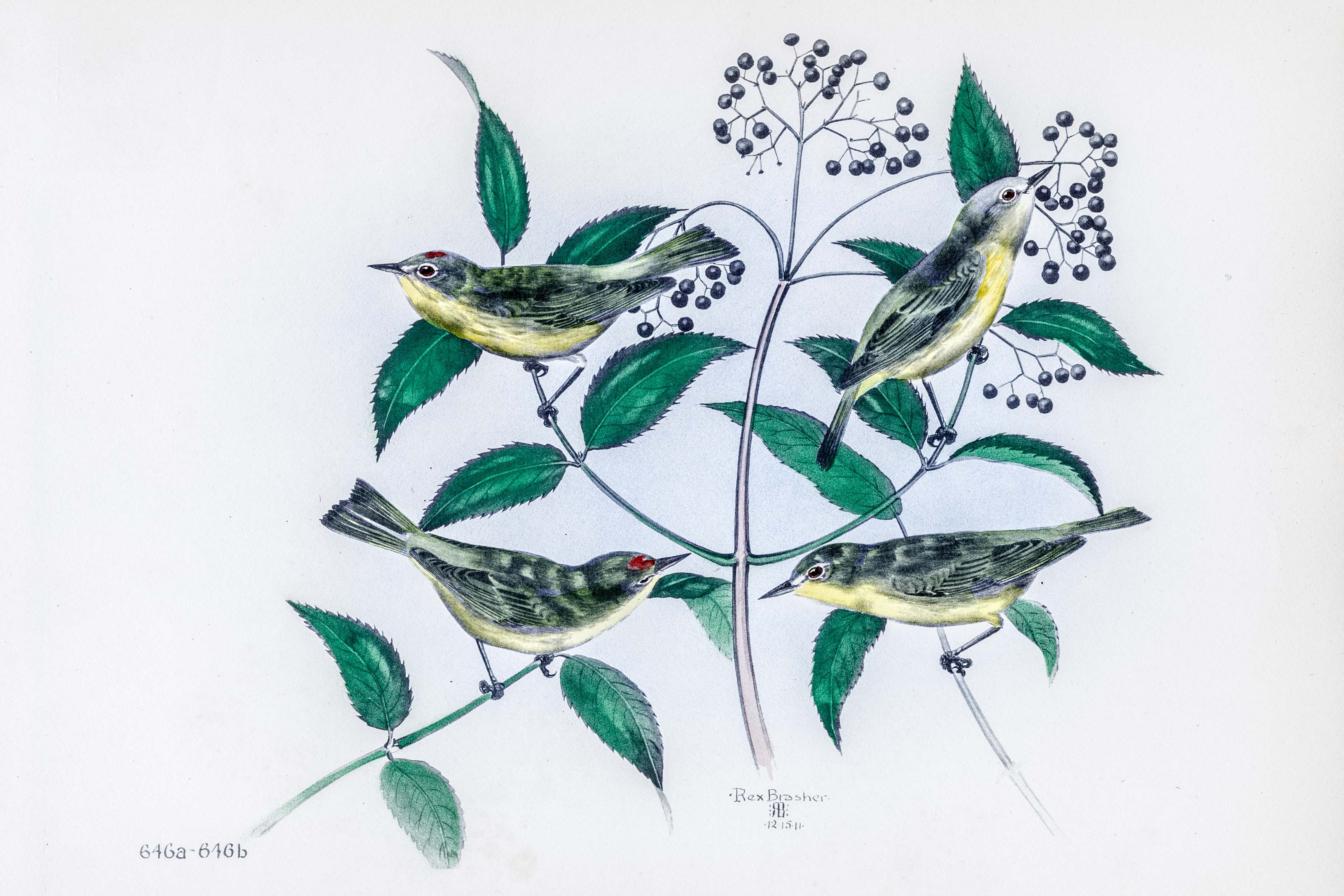
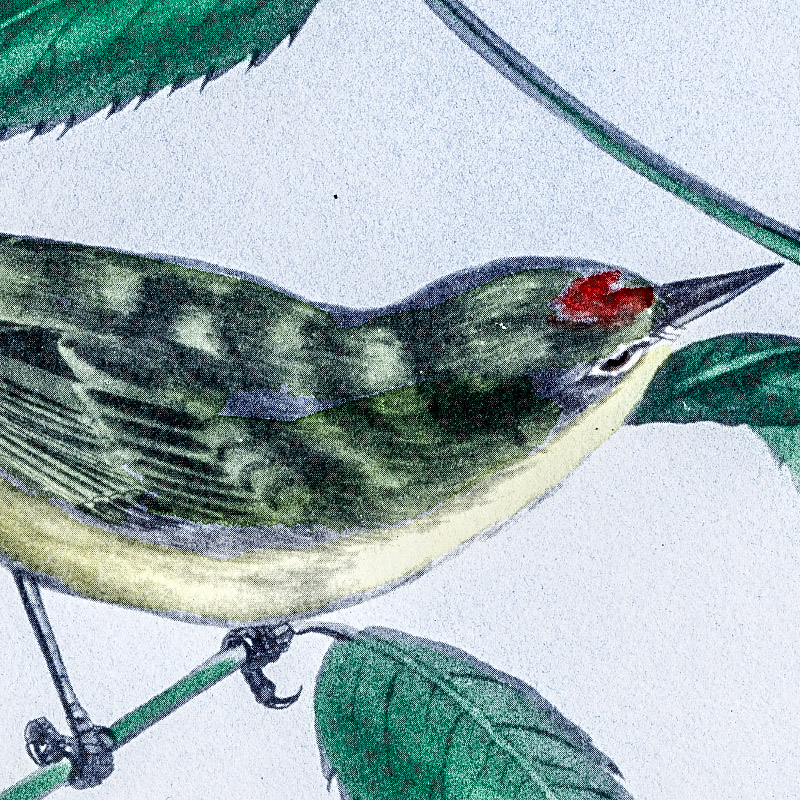
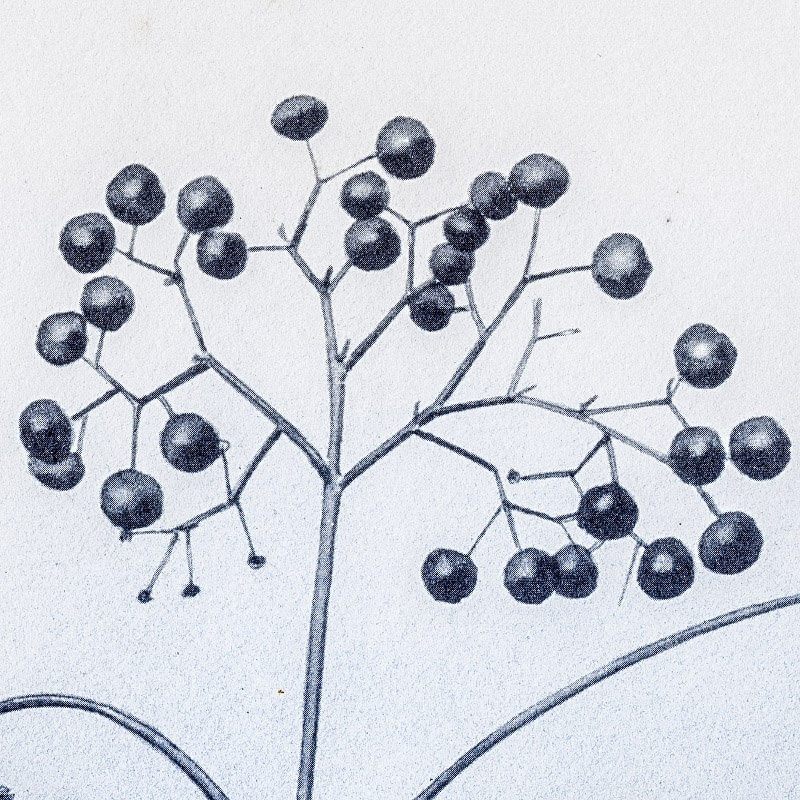
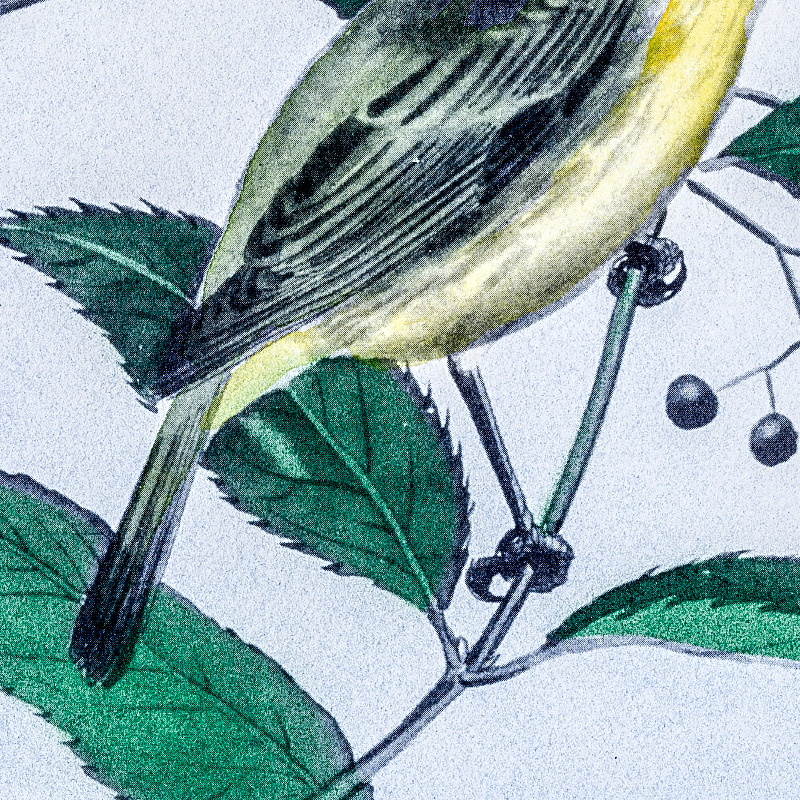
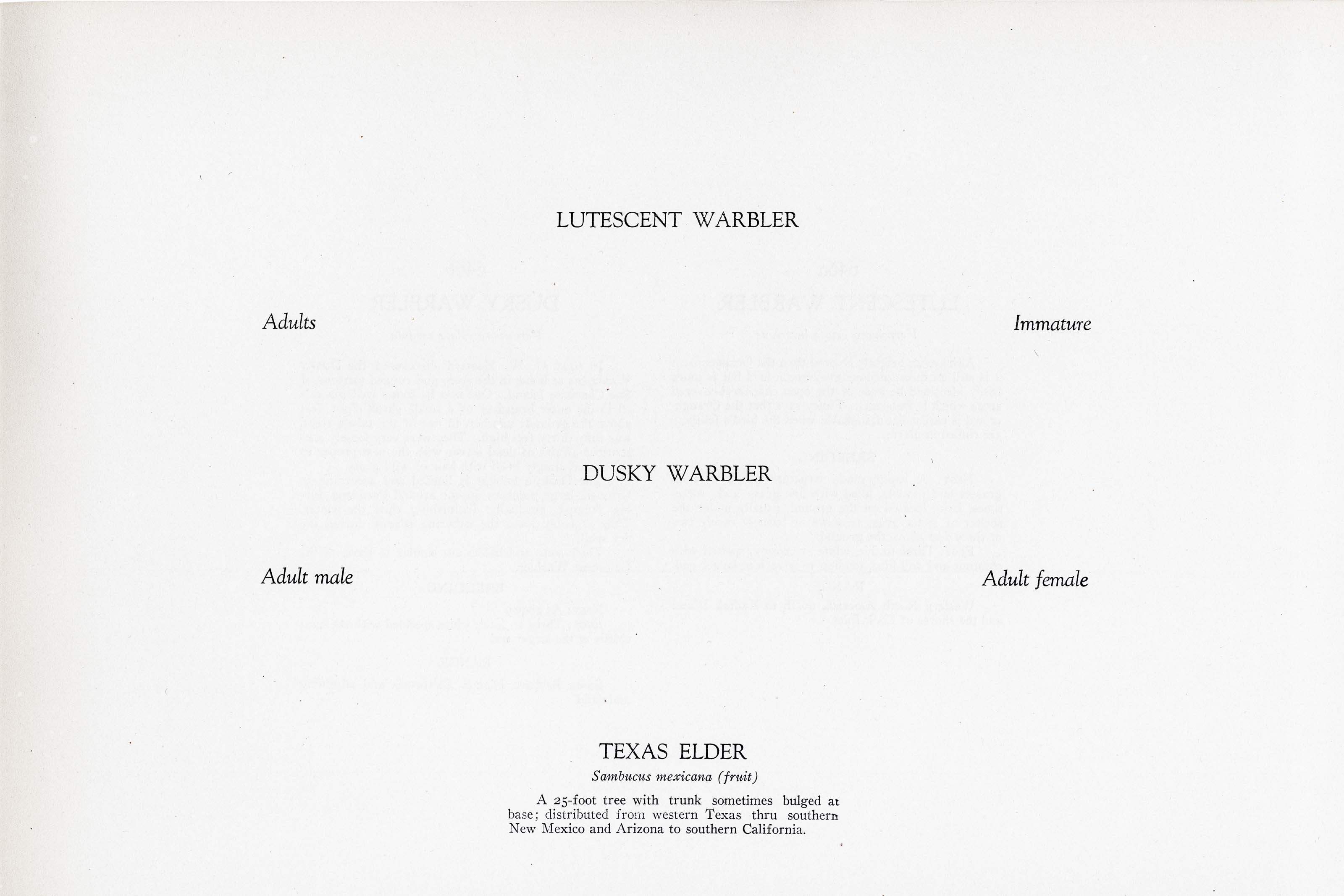
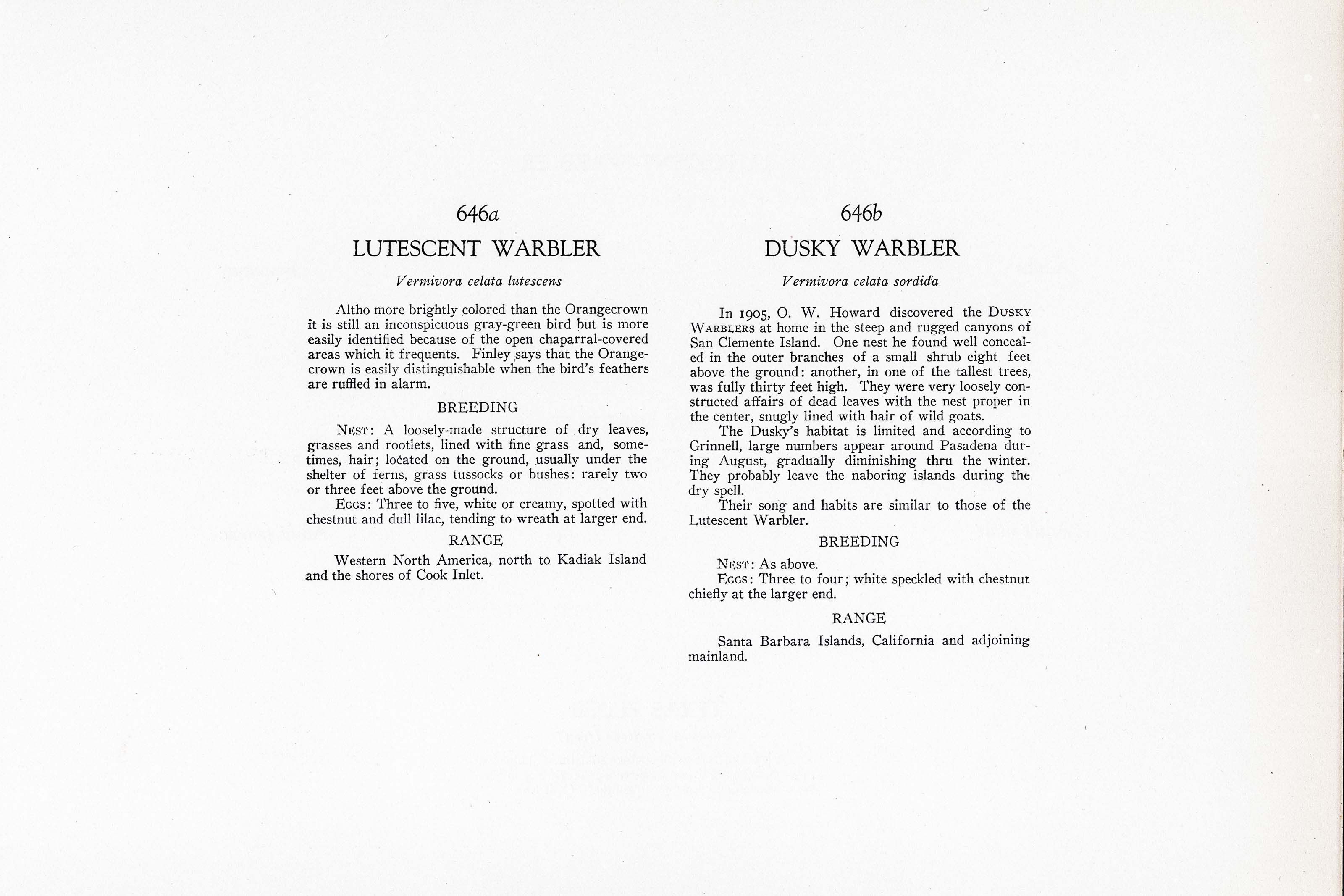

1911
1930
11
646a-646b
A team of dedicated board members, volunteers, and student interns has published every page in Volume 9. This volume includes 360 images of paintings and lyrical descriptions of birds, now available online for everyone to enjoy anywhere in the world. This is a monumental task. Each volume requires approximately 400 hours to photograph, edit, transcribe, catalog, and publish online. We need your support to complete this work.
If you're tech-savvy, have a good eye, are meticulous with details, and love structured data, please consider volunteering by emailing us at hello@rexbrasher.org.
We encourage all bird lovers and supporters to consider a monetary donation to support our mission to make Rex's work available for everyone. You can provide a one-time or recurring donation online.
Altho more brightly colored than the Orangecrown it is still an inconspicuous gray-green bird but is more easily identified because of the open chaparral-covered areas which it frequents. Finley says that the Orangecrown is easily distinguishable when the bird's feathers are ruffled in alarm.
NEST: A loosely-made structure of dry leaves, grasses and rootlets, lined with fine grass and, sometimes, hair; located on the ground, usually under the shelter of ferns, grass tussocks or bushes: rarely two or three feet above the ground.
EGGS: Three to five, white or creamy, spotted with chestnut and dull lilac, tending to wreath at larger end.
Western North America, north to Kadiak Island and the shores of Cook Inlet.
In 1905, O. W. Howard discovered the DUSKY WARBLERS at home in the steep and rugged canyons of San Clemente Island. One nest he found well concealed in the outer branches of a small shrub eight feet above the ground: another, in one of the tallest trees, was fully thirty feet high. They were very loosely constructed affairs of dead leaves with the nest proper in the center, snugly lined with hair of wild goats.
The Dusky's habitat is limited and according to Grinnell, large numbers appear around Pasadena during August, gradually diminishing thru the winter. They probably leave the naboring islands during the dry spell.
Their song and habits are similar to those of the Lutescent Warbler.
NEST: As above.
EGGS: Three to four; white speckled with chestnut chiefly at the larger end.
Santa Barbara Islands, California and adjoining mainland.
A 25-foot tree with trunk sometimes bulged at base; distributed from western Texas thru southern New Mexico and Arizona to southern California.